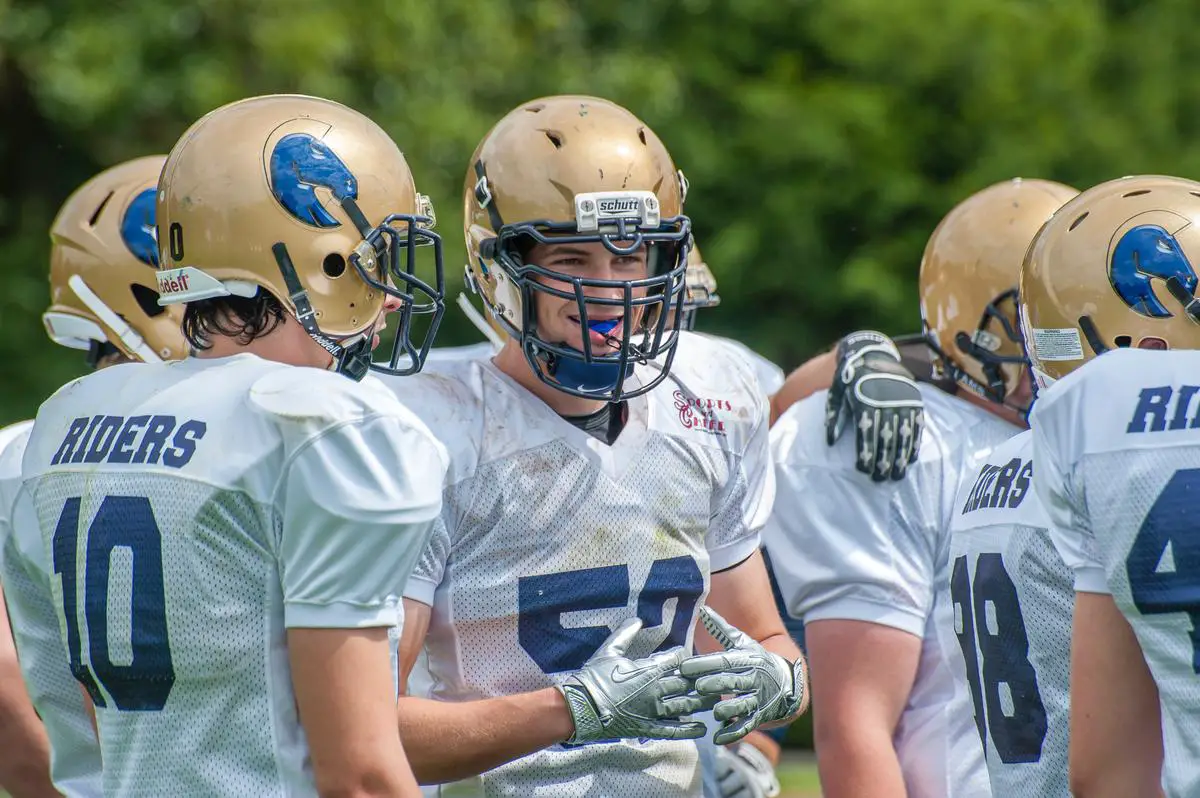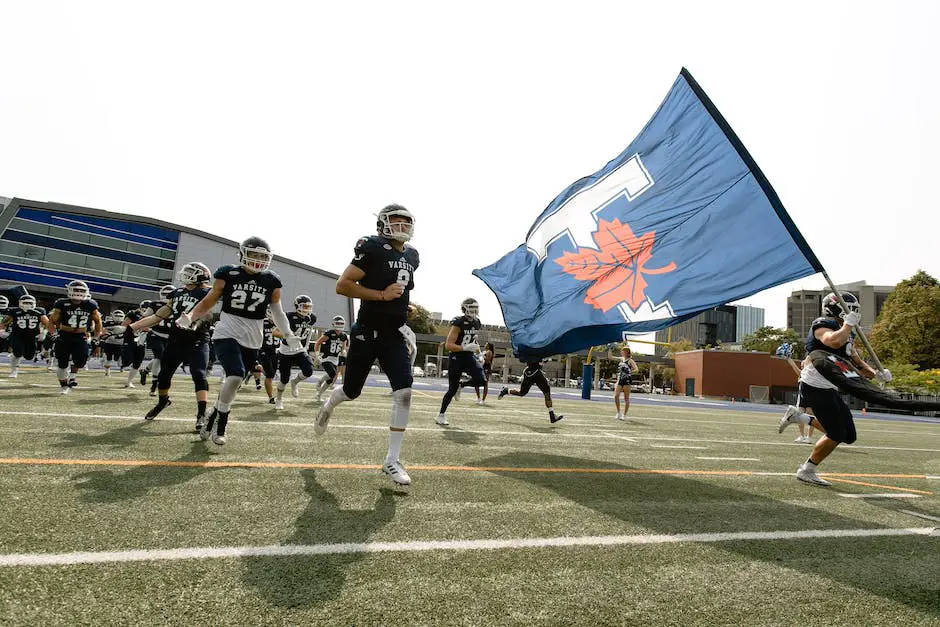Top NFL Draft Prospects: In-Depth Analysis
As the NFL draft approaches, anticipation and excitement continue to build among football fanatics and experts alike. This yearly event presents a fresh start for every team, offering an opportunity to strengthen their roster with talented, promising prospects. From evaluating player rankings and comparisons, dissecting strengths and weaknesses, to providing historical context and mock drafts predictions, our in-depth analysis aims to inform and engage general audiences on the thrilling journey of these future NFL stars.
Player rankings and comparisons
One critical aspect of ranking NFL draft prospects is evaluating their college statistics. These numbers help provide an understanding of how well a player performed at the collegiate level and how their skills might translate to the NFL. For example, quarterbacks with high completion percentages, low interception rates, and impressive passing yards could be expected to transition more smoothly to the professional game. Similarly, running backs with a track record of putting up large rushing and receiving yard totals could indicate a versatile playmaker ready for the next level. However, college statistics should be taken with a grain of salt, as they don’t always paint a complete picture of a player’s ability to succeed in the NFL due to varying levels of competition and scheme fits.
Physical attributes are another essential factor when scouting NFL draft prospects. Size, speed, and strength can all play into a player’s success at the professional level, and NFL scouts place a high premium on these measurable traits. For instance, offensive and defensive linemen with long arms and quick feet are often highly coveted for their ability to control the line of scrimmage. On the other hand, speed and agility are vital for more skill-position players, like wide receivers and defensive backs, who must make plays in space.
Potential fit within NFL teams is a crucial aspect of evaluating draft prospects. Given the wide variety of offensive and defensive schemes employed across the league, certain prospects may be more successful in specific systems. Talent evaluators must consider how a player’s skill set would mesh with their team’s existing roster and coaching philosophy. For example, a mobile, dual-threat quarterback would likely thrive in a system catering to their running ability, while a more traditional, pocket-passing quarterback may struggle.
Comparisons between highly-touted prospects who play the same position can also provide valuable insight into their potential at the NFL level. By analyzing similarities and differences in their statistical production, physical attributes, and skill set, evaluators, fans, and analysts can form opinions on which prospect might ultimately have a more significant impact on the league. For instance, in the 2020 NFL draft, the wide receiver debate centered around Alabama’s Jerry Jeudy and Oklahoma’s CeeDee Lamb. While both players boasted impressive college resumes and athleticism, opinions varied on who presented the better overall package. Such comparisons often generate spirited debates and can play a significant part in shaping a team’s draft strategy.
When evaluating NFL draft prospects, scouting services and draft analysts often use past NFL success as a yardstick, comparing young players to established professionals with similar traits. These comparisons can help provide a frame of reference for how a player might perform at the NFL level and what their ceiling may be. For example, a draft prospect with the size and skill set similar to a multiple-time Pro Bowler might generate more interest from NFL teams, media, and fans. However, it’s important to remember that each player’s success ultimately depends on factors like work ethic, coaching, and opportunity to excel in their specific roles.

Strengths and weaknesses
Building on this evaluation method, one of the most critical aspects to assess in an NFL draft prospect is their strengths. Strong performances in college games, impressive statistics, or notable athletic abilities can often catch the attention of NFL scouts. For instance, a wide receiver with an extraordinary catch radius and consistent hands would be considered a highly valuable prospect. Similarly, a quarterback boasting impressive arm strength and accuracy, or a running back with exceptional vision and power, is more likely to make a significant impact in the league. Furthermore, players who demonstrate excellent leadership and poise in high-pressure situations are highly sought after, as NFL games often come down to the wire and require clutch performances.
On the flip side, weaknesses can affect a prospect’s draft position and have a broader impact on their NFL career prospects. For instance, if a player struggles with inconsistent performances or has glaring flaws in their technique or decision-making, they might be considered less appealing to NFL teams. An offensive lineman who has trouble maintaining balance or has slow footwork, a cornerback who finds difficulty in sticking with fast and agile receivers, or a quarterback with poor decision-making skills are all examples of weaknesses that can make a prospect less attractive in the draft.
College performance is another essential factor to consider when analyzing NFL draft prospects. While impressive statistics are undoubtedly a vital part of the evaluation, it’s also essential to look at the competition level each player faced during their college career. Prospects who are dominant against lower-tier competition might struggle at the NFL level, where the overall talent and athleticism is much higher. Hence, it’s crucial to analyze how a prospect performed during crucial games or against highly-ranked opponents.
Work ethic is an influential factor in determining how successful an NFL draft prospect will be in the professional football ranks. The training regimens, dedication to the sport, and willingness to improve are crucial aspects of any player’s journey. Prospects who demonstrate a strong work ethic, constantly looking to refine their skills and push themselves to become better, have a higher likelihood of success in the NFL. Teams will look for players who can be counted on, show proper discipline, and possess a relentless drive for success.
When evaluating NFL draft prospects, it is crucial to consider their adaptability to different playing styles and schemes. Versatility plays a significant role, particularly for those who may not have an easily defined position in the NFL. For example, linebackers who excel in both pass coverage and run defense, tight ends who can block and catch passes effectively, and interior offensive linemen who can pass protect and run block efficiently are highly valuable in today’s game. Furthermore, prospects with experience in both pro-style and spread offensive systems at the college level will have a more comprehensive understanding of the various concepts and schemes used in the NFL, making them increasingly desirable to teams.

Historical context
To better understand the current group of NFL draft prospects, it’s helpful to compare them to those from previous draft classes. Through the years, there have been draft picks that have outperformed expectations, while others have failed to live up to the initial hype. By examining these past draft selections, we can attempt to identify factors that contribute to a player’s success or failure in the NFL. Draw from these insights to strengthen informed opinions on the forthcoming draft prospects and their potential to succeed at the professional level.
Some notable draft success stories include the 1983 NFL Draft, widely regarded as one of the best drafts in NFL history due to the sheer talent and depth of the class. That year, six quarterbacks were selected in the first round, and three of them – John Elway, Jim Kelly, and Dan Marino – went on to become Hall of Famers. Their success demonstrates the importance of having a franchise quarterback, as well as showing how high the bar is set for quarterbacks to be considered elite in the NFL. In contrast, the 1998 NFL Draft saw Ryan Leaf selected as the second overall pick behind Peyton Manning, but Leaf is often considered one of the biggest busts in NFL history due to his poor performance and off-the-field issues.Aside from the position played, certain factors can contribute to a player’s success or failure in the NFL. Physical attributes are crucial – players need to have the size, strength, and quickness required to perform at the highest level. However, simply having the raw physical tools isn’t enough. Mental toughness, football intelligence, and work ethic also play a significant role in determining a player’s ability to succeed in the league. Many top prospects who failed in the NFL, such as JaMarcus Russell and Vince Young, had all the physical tools but lacked the necessary mental traits to excel as professionals.The scouting process is instrumental in determining which players have the potential to be successful in the league. Undoubtedly, some prospects rise to prominence seemingly out of nowhere. For example, Tom Brady was drafted in the sixth round of the 2000 NFL Draft but went on to become one of the greatest quarterbacks of all time. Similarly, Antonio Brown and Richard Sherman were both overlooked in their respective drafts but have become perennial All-Pro talents.In addition to player-specific factors, situational factors can greatly impact a draft prospect’s success in the NFL. The coaching staff, quality of offensive or defensive schemes, and the overall team culture can have a significant impact on a player’s development. For instance, a quarterback drafted by a team with a poor offensive line and limited weapons may struggle, while the same player might thrive in a different situation where the team’s strengths accentuate their abilities. Assessing these factors and analyzing previous draft classes can provide valuable insight into predicting which prospects are likely to succeed in the league. It’s important to recognize that, ultimately, the draft is only the beginning of a player’s journey; their determination, adaptability, and perseverance will dictate their NFL career trajectory.

Mock drafts and predictions
One important aspect of understanding draft prospects’ potential success is examining their fit within specific teams, as seen in recent mock drafts. For example, the Jacksonville Jaguars are expected to select Clemson quarterback Trevor Lawrence with the first overall pick. Lawrence has been touted as a generational talent and a can’t-miss prospect ever since his freshman season when he led Clemson to a national championship. Assuming the Jaguars do select Lawrence, the next domino to fall could be the New York Jets, who hold the second overall pick. Many experts believe that they will also select a quarterback, possibly BYU’s Zach Wilson or Ohio State’s Justin Fields, to replace the struggling Sam Darnold. This demonstrates how a player’s potential success in the NFL can be greatly influenced by the team they join and the environment in which they develop.It’s evident that several teams in the top 10 have a need for a quarterback, leading to a potential flurry of trades early on. The Atlanta Falcons, who hold the fourth overall pick, could be a candidate for a trade-back scenario. With Matt Ryan still performing at a high level, they might not be ready to select his eventual successor just yet. Instead, a quarterback-needy team like the New England Patriots or the Washington Football Team could move up to select one of the remaining top quarterback prospects.Another area of the draft that has generated much debate is the wide receiver position. This year’s draft class is loaded with top-tier talent at the position, with prospects such as LSU’s Ja’Marr Chase, Alabama’s DeVonta Smith, and Jaylen Waddle all projected as potential top 10 picks. The Miami Dolphins, who hold the third overall pick after trading with the Houston Texans, could be in prime position to snag one of these elite playmakers. The Philadelphia Eagles are another team in need of an offensive weapon, and they could potentially snag one of the top wide receivers if they stay at their current position of pick number six.Defensively, there is also an interesting dynamic at play in the upcoming draft. One player to watch is Penn State linebacker Micah Parsons, who has been ranked as the top off-ball linebacker in the draft. Parsons opted out of the 2020 college football season, but his athleticism and versatility are highly coveted by NFL teams. The Detroit Lions, who hold the seventh overall pick, could be an ideal landing spot for Parsons as they need to immediately improve their defense. Additionally, the cornerback position is also one that has garnered attention, with Patrick Surtain II (Alabama) and Caleb Farley (Virginia Tech) considered as the consensus top prospects at the position. The Dallas Cowboys, picking at number 10, may target one of these elite cornerbacks to bolster their secondary.As the NFL Draft approaches, there are bound to be unexpected moves and surprise selections. In such a unique draft process due to the COVID-19 pandemic, predraft evaluations have been more challenging than usual, which may lead to a higher degree of unpredictability. That being said, given the depth and talent in key positions like quarterback, wide receiver, and defensive playmakers, the upcoming NFL Draft should provide plenty of intrigue and potentially franchise-altering selections.

Impact on teams and upcoming season
When NFL teams evaluate their roster needs heading into the draft, it’s essential to consider not only a prospect’s immediate impact but also their long-term potential. This ensures a connection between the deep talent pool in the upcoming draft and the teams’ future success.
One such prospect that has NFL teams buzzing with excitement is Clemson quarterback Trevor Lawrence. Projected by many to be the number one overall pick by the Jacksonville Jaguars, Lawrence could instantly become the face of the franchise and potentially lead the Jaguars back to relevance in the league. With his natural arm talent and ability to extend plays with his legs, Lawrence is considered by many to be a generational talent and could very well contend for Rookie of the Year honors in his first season.
Another prospect that could make an immediate impact on his potential future NFL team is LSU wide receiver Ja’Marr Chase. After opting out of the 2020 college football season due to COVID-19 concerns, Chase is still considered the top receiver in this draft class due to his elite speed, route-running, and ball skills. A team like the Cincinnati Bengals, picking fifth in the draft, could benefit greatly from pairing Chase with his former college teammate, quarterback Joe Burrow. Addressing the need for a dynamic receiver, Chase could help transform Cincinnati’s offense and create a potent connection with Burrow that may rival the league’s elite passing attacks.
On the defensive side of the ball, Penn State linebacker Micah Parsons has the potential to anchor a franchise’s defense for years to come. His versatility allows him to excel in both run and pass coverage, making him an attractive option for teams in need of a playmaker at the linebacker position. A team like the Detroit Lions could certainly use a player like Parsons, as they ranked poorly in both run and pass defense last season. The Lions, selecting seventh overall, could tremendously benefit from the defensive leadership and sheer athleticism that Parsons brings to the table.
While it’s important for teams to find prospects who can contribute right away, it’s equally crucial to evaluate a player’s long-term potential. Quarterback development is by far the trickiest aspect of the draft, with late-round picks like Tom Brady far exceeding expectations and highly-touted prospects like JaMarcus Russell ultimately disappointing. As such, a team like the New England Patriots, who may be looking to move on from the Cam Newton experiment, might take a chance on a quarterback like Alabama’s Mac Jones. Jones is not a dual-threat quarterback like Lawrence, but his football IQ, accuracy, and quick decision-making could make him a solid option for a squad looking to return to championship contention.
Similarly, teams looking to invest in long-term offensive line prospects to protect their franchise quarterbacks may have Texas tackle Samuel Cosmi on their radar. Cosmi is a versatile lineman who can play both left and right tackle, providing a much-needed boost for teams with lackluster protection up front. With excellent footwork for his size and a wide-ranging skill set, Cosmi is a prospect that could very well be a staple on an NFL offensive line for years to come. Ultimately, as the draft approaches and teams continue to evaluate their needs, prospects like Cosmi, Lawrence, Chase, and others will be heavily scrutinized to determine their immediate impact and long-term potential in the league.

By examining top prospects, their playing styles, and the potential impact on their future teams, fans can better understand the strategic choices and stakes involved in the upcoming NFL draft. This comprehensive analysis not only offers an overview of these talented athletes but also fuels fans’ excitement for the NFL’s future as these young men transition from collegiate to professional football. With the right mix of talent, determination, and fit within their respective teams, these draft prospects have the potential to make their mark in the NFL and become the next generation of football legends.
